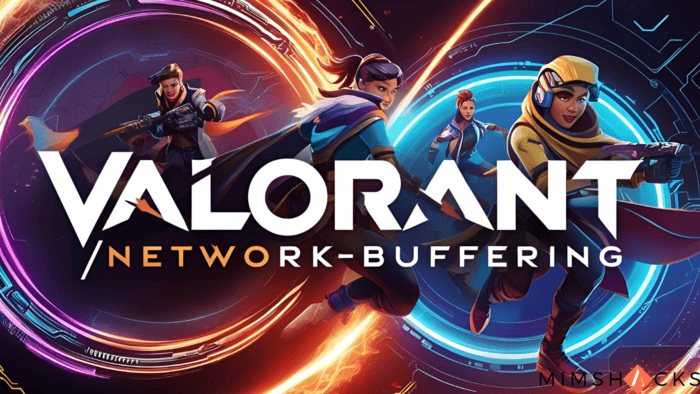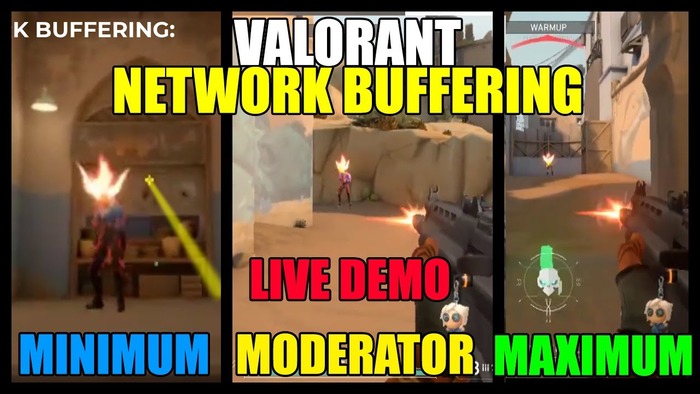What Is Network Buffering in Valorant and How Does It Affect Your Game?
Network buffering in Valorant plays a vital role in managing data transfer between the game client and server, helping to smooth out any inconsistencies caused by network fluctuations for a more stable gameplay experience.
Attention, Valorant players and network enthusiasts! Today, we’re diving into a crucial feature directly impacting your online gameplay: network buffering.
If you’ve ever wondered why your shots don’t always land as intended or why your movement feels off, network buffering could be the reason – or the solution!
Let’s explore this important yet often overlooked aspect of online gaming.

How Network Buffering Affects Valorant
In Valorant, network buffering ensures smooth gameplay by regulating the data flow between your device and the game’s servers, even when your internet connection faces interruptions.
Here’s the process:
- The game continuously exchanges data packets with the server.
- Network buffering temporarily stores these packets.
- When some packets arrive late or in the wrong order, the buffer holds the correctly timed packets.
- The game reorders and synchronizes the data before presenting it to you.
The result? A more stable and consistent gaming experience, even when your internet fluctuates.
How Network Buffering Affects Your Gameplay
Network buffering plays a crucial role in shaping your Valorant experience, with both positive and negative outcomes:
Benefits:
- Improved Movement Fluidity: It minimizes interruptions and ensures smoother motion from other players.
- Enhanced Stability: It helps maintain a steady game state even when there are minor disruptions in your internet connection.
- Equal Opportunity: It works to ensure fairness for players with different internet speeds and connection quality.
Drawbacks:
- Delayed Response: It may cause a slight delay between your action and what appears on screen.
- Mismatch Between Display and Reality: What you see on your display may not always match the server’s actual state.
- Unpredictable Shot Outcomes: You might feel like you’ve avoided an attack, but it could still register as a hit.
Note:
Finding the right level of buffering is key. Too little can result in jerky gameplay, while too much can make the game slow and unresponsive.

Improving Network Buffering for Enhanced Gameplay
Valorant allows you to adjust network buffering settings to optimize your gaming experience. Here’s a breakdown of the available options:
- Minimum Buffer: The lowest level of delay introduced.
- Lower values: Increase responsiveness, but may reduce connection stability.
- Higher values: Enhance stability, though they might reduce how quickly the game reacts.
- Maximum Buffer: Systems allow only a limited amount of delay.
- Lower values: Limit the maximum delay, but can cause more noticeable connection problems.
- Higher values: Smooth out gameplay, but may add additional delay.
Buffering Mode Options:
- Off: No extra delay added. Provides maximum responsiveness but may lead to instability.
- Low: Adds a slight delay, offering a balance between responsiveness and stability.
- Medium: The default setting is ideal for most types of connections.
- High: Provides maximum smoothing for unstable connections, though it might increase delay.
How to Adjust These Settings:
- Launch Valorant and open the Settings menu.
- Go to the ‘General’ section.
- Scroll down to the ‘Network Buffering’ area.
- Experiment with different settings to find the best option for your setup.
Tip:
Test your chosen settings in the Practice Range or Deathmatch mode before engaging in competitive matches to see how they affect your gameplay.
Other Related Concepts
When you experience connection delays in the game, you might come across these related terms:
- Response Time: Describes the time it takes for your device to send data to the system and get a reply.
- Delay: Represents the gap between when you take action and when it appears in the game.
- Data Loss: Occurs when information fails to reach its destination, causing missing data in the game.
- Data Prediction: The method used by the game to estimate movement based on the received information.
- Update Frequency: Indicates how often the system refreshes the game’s state.
- Advantage of First Movement: Refers to the occurrence where a player moving first can detect an opponent slightly earlier than the opponent sees them.
- Mismatch: Happens when the game’s client and the server disagree on the game’s current state.
- Backtracking: Describes when objects or characters seem to return to a previous location during gameplay.
- Inconsistent Response: Refers to fluctuating connection times that affect how steady your link is.
- Pre-Event Guessing: Describes the system’s effort to predict game events before receiving confirmation.
- Communication System: Refers to the code that governs how the game exchanges data across the network.
- Impact Detection: Refers to determining whether your actions connect with the intended target.
Now, you know how to understand and manage connection delays in your game. Remember that the ideal settings depend on your network speed, device performance, and personal preferences.
Feel free to test different configurations, but remember, no amount of tweaking can fully compensate for a weak connection.
Fine-tune your setup, stay aware of your network status, and aim for smooth and consistent gameplay.
With the proper adjustments, your performance will reach its peak!





